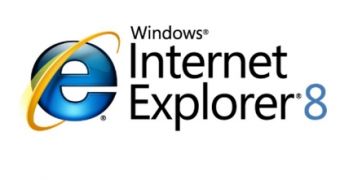With the advent of Internet Explorer 8 RTW, Microsoft has changed the way that the browser informs users that mixed content is available to be displayed. Essentially, the Redmond company has re-focused the dialog box from nonsecure content to secure content, and is making it abundantly clear that selecting the first of the two will compromise the security of the webpage. The move is an evolution from Internet Explorer 7, and although just a simple detail, it is set up to increase the security level by going against the generalized tendency to click “Yes.”
“We changed the wording of the mixed content warning dialog to "Do you want to view only the web content that was delivered securely?" The buttons are "Yes/No". If you want to display mixed content in IE 8 you should click "No",” revealed a member of the IE Support team, adding that in Internet Explorer 7, things were a tad different. “The previous versions of IE asked the user "Do you want to display the secure and non secure content?" You click "Yes" If you want to display mixed content.”
Mixed content is a term that defines both HTTP and HTTPS content present simultaneously on the same webpage, but only if the page is delivered through the SSL-secured HTTPS protocol. An attempt to load non-SSL (plain vanilla HTTP protocol) content on such a page would produce a warning from the browser. The same is not valid for HTTP pages that load HTTPS content.
“Hypertext Transfer Protocol Secure (HTTPS) is an Application Layer protocol that is a combination of HTTP and SSL (Secure Socket Layer) or TLS (Transport Layer Security). HTTPS connections are used for secure transfer of data between the website and the client. Messages are secure since the HTTP message is encrypted via SSL or TLS and then sent on the network/internet. When the message is received by the addressed station, it decrypts the message,” the IE Support team representative added.
Internet Explorer 8 (IE8) RTW is available for download here (for 32-bit and 64-bit flavors of Windows XP, Windows Vista, Windows Server 2003 and Windows Server 2008).

 14 DAY TRIAL //
14 DAY TRIAL //